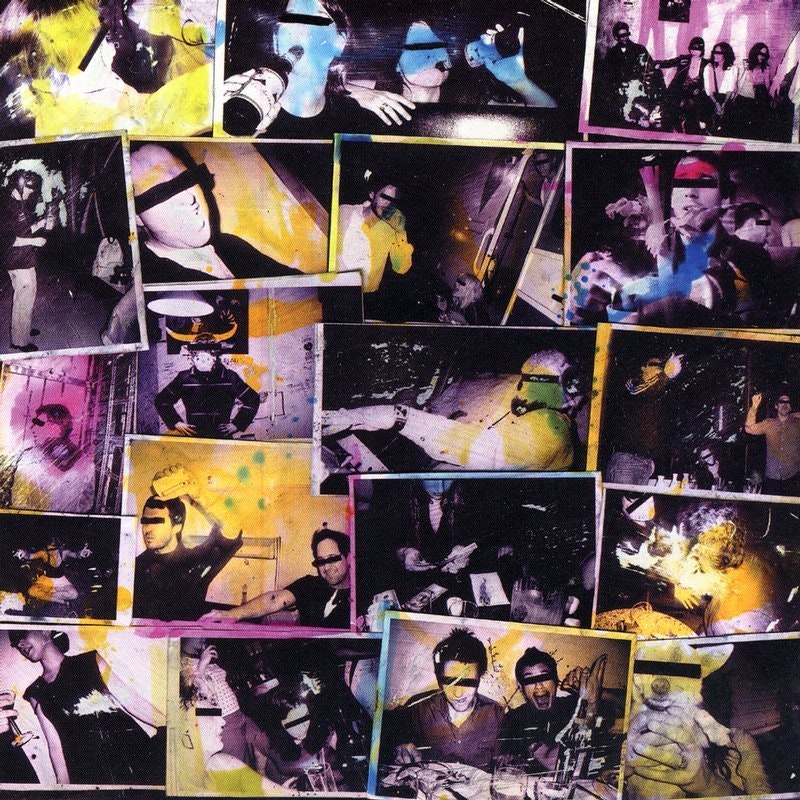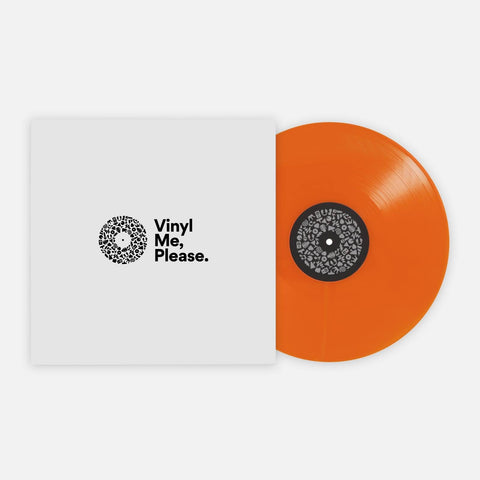We look back on the first two Hold Steady Albums, which are being reissued tomorrow. by Luke Bradley.
It’s fortuitous that Bruce Springsteen’s long anticipated autobiography is currently atop bestseller lists the same time the Hold Steady celebrate a trio of their classic albums. On “Barfruit Blues,” a song from the Hold Steady’s first album Almost Killed Me, the band’s singer/lyricist Craig Finn describes a room where, "Half the crowd are calling out for Born to Run and half the crowd are calling out for ‘Born to Lose’.” Musically and spiritually speaking, it’s close to a mission statement for the band. The song continues to riff on those phrases before concluding, “We were born to bruise.” Not only does the lyric refer to Bruce Springsteen’s signature song (also the title of the autobiography), but it mirrors Springsteen’s own self-definition / origin story, that of, “your local bar band, blown up to big-time scale,” as he puts it in his book.
The Hold Steady will reissue their first two albums, Almost Killed Me (2004) and Separation Sunday (2005) on November 11. The band also marks the 10-year anniversary of Boys and Girls in America with a series of four (immediately sold out) Brooklyn shows in December. But any slight indulgences can easily be forgiven – I can’t think of many other aughts bands whose discographies have rewarded and demanded repeat, obsessive listening as continually. With time, the raised hands, hard-drinking killer choruses tend to recede and it’s the pathos of these records that stick with you – after all the second half of the Kerouac line borrowed for Boys and Girls and “Stuck Between Stations” is, “…have such a sad time together.”
Finn has said his songs are about the hangover as much as the party but more remarkably, they're about the inseparability of the two. While there’s certainly emotional ebbing and flowing within a Hold Steady album, Finn seems to combine the tenor of both poles of Springsteen anthem, the depressive and the resolute /celebratory, into every bar of music. Though plenty of other bands get referenced in Finn's lyrics (to name just some: Billy Joel, Heavenly, Kate Bush, Rod Stewart, the Pogues, Iggy Pop, the Clash, 7 Seconds, Youth of Today, Stevie Nicks, Led Zeppelin, Dillinger Four, ACR, Bob Marley, Husker Du, Jane’s Addiction ….), only Bruce’s songbook comes up again and again. But Springsteen’s relationship to the Hold Steady goes beyond punchline fodder. His oeuvre serves as a jumping off point for Finn’s own unique, labyrinthine exposition. (Not that there isn’t Bruce-themed wordplay if that’s what you’re after – “Tramps like us and we like tramps” being a key example.)
The mythos and self-mythologizing found on the first three albums, which present recurring characters, threads, themes, images and phrases, all but guaranteed the band a cult following. This repetition and doubling-down occurs as far back as the second track from their first record. Parts of Almost Killed Me come off as slapdash sketches, planting seeds for the band’s later work. The back half of “Hostile, Mass,” for instance, contains phrases that are the basis for at least two more polished songs on later albums.
The Hold Steady was itself a second act from the get go; Finn and Kubler's previous band Lifter Puller had enjoyed cult and regional success in the Twin Cities. A move to NYC, revelatory airings of The Last Waltz and Every Picture Tells a Story and an aversion to the early ‘80s revivalist trends of early ‘00s Brooklyn that surrounded them inspired the new outfit. On paper, the recipe for an early Hold Steady record sounds obscure, pretentious and just not very good: a loose, punkish take on heartland and classic rock caught up in born-again Christianity, canonical modern literature, drug abuse and rapid-fire pop culture references that flirt with eye-rolling, sportscaster territory. But, partly due to the self-contained world of the songs and Finn’s dedication to the strange mixture, it’s not hard to get lured in.

Addiction provides the backdrop for nearly all of Finn’s tales from this era. Ten years ago, addiction in Middle America wasn’t yet a Frontline special, recognized as an epidemic, or an election issue. Because heroin’s spread to suburbia now appears complete, the songs still seem thoroughly contemporary. The kids in these storylines have critical encounters with alcohol, coke, hallucinogens, nitrous oxide, prescription drugs and new substances no one’s too sure of yet. There are overdoses, comas and friends on the verge of death. Much of the time the continual need to get high is presented less as rock ‘n roll hedonism than a perpetually derailed quest for self-care, or just a matter of course. Finn describes the slippery slope of addiction (“started recreational and ended kinda medical / and it came on hot and soft and then it tightened up its tentacles”), often in deceptively nonchalant terms. But there’s also compassion you don't find in much other music. The least unreliable narrator’s voice on the band’s albums, the one one assumes is closest to Finn’s own, reflects a mix of genuine deep concern, love and sadness for troubled young people, especially women.
In “Sketchy Metal,” a song from Almost Killed Me, Finn situates the Hold Steady universe in a post- Darkness On The Edge of Town death trap, noting "it was dark around the edges of the city". In these three albums though, the darkness will seep further inwards, the switchblades have become guns, there’s self-harm instead of blood oaths, and Rosalita can’t get much higher. Wildness abounds but innocence is in short supply. The two artists projects are similar if not identical. Springsteen transposes religious paradigms onto rock ‘n roll and teenage themes, while The Hold Steady employs catholic imagery to get at the sadness, striving and occasional hope and redemption of young Americans – drifters, service industry workers, the hardcore kids, skaters, crust punks, ravers and straight-edgers.
Echoing Springsteen's jump from his first two hyper-wordy albums to his distilled, breakout Born To Run LP, The Hold Steady's sophomore record Separation Sunday witnessed the band becoming laser focused, building on the best concepts from Almost Killed Me and following the character Holly (Hallelujah) on a contemporary, Midwestern version of a classic redemption arc. At the record’s end (spoilers), Hallelujah, hoodrat and vanished sex worker who is presumed dead, finally returns to the Church after a series of sketchy stand-ins. Her reappearance is triumphant but also an act of defiance - she’s bloody, intoxicated and challenges the wisdom of her priest and the congregation. And as the background vocals heralding “welcome back” offer up one reaction to her return, one of the final lines on the record reflects Holly’s current precariousness and her fear of relapse.
Finn has spoken of his admiration for the writing in Springsteen’s "Atlantic City," particularly the lines forming its ominously understated crux: “I’m tired of coming out on the losing end / So honey last night I met this guy / And I’m gonna do a little favor for him.” The Hold Steady’s albums explore the aftermath of these shady associations; on the plaintive “Crucifixion Cruise,” our anti-heroine asks, “Lord, what would you recommend to a real sweet girl who’s made some not sweet friends?”
By the time of Boys and Girls in America, the band knew their way around a hook, and their third album contained many sing-along ready choruses - in "Party Pit", "Massive Nights", "Chips Ahoy" and "Southtown Girls" - of the kind that bring Finn's characters together. The album follows up with Gideon, Holly/Hallelujah and Charlemagne, but begins to move away from the linearity of Separation Sunday.
As with Bruce, and more so than most bands, the live component is essential to what this band does. Finn’s wild gesticulating, meta-commentary and famous nightly climactic announcement that “there is so much JOY in what we do up here” take the teetering outlook of these albums and tip the balances towards a hopeful resolution through sheer energy and communal expression. Like a Springsteen set, there's always a wide range of tone, from the comical to the righteous.
Springsteen analyzes these massive nights in a telling passage from the book: "It's a life-giving, joyful, sweat-drenched, muscle-aching, voice-blowing, mind-clearing, exhausting, soul-invigorating, cathartic pleasure and privilege every night. You can sing about your misery, the world's misery, your most devastating experiences, but there is something in the gathering of souls that blows the blues away. Something that lets some sun in, that keeps you breathing, that lifts you in a way that can't be explained, only experienced. It's something to live for, and it was my lifeline to the rest of humanity in the days when those connections were tough for me to make."
You can see an old clip of Finn performing with his hero during the finale of a Springsteen tribute concert. His joy is on full display and the shared belief that “rock ‘n roll saves” is just below the surface.
Join the Club!
Join Now, Starting at $36Pages




